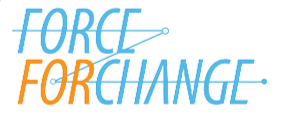 At Dreamforce a group of us pulled together a panel to share our collective experience building and scaling Salesforce applications for the nonprofit sector. This post is a collaborative effort with Alex Bernadotte from Beyond 12, Zach Goldstein from Health Leads, Tiffany Eng from Capital Impact Partners, and Jesse Maddex from the Salesforce Foundation.
At Dreamforce a group of us pulled together a panel to share our collective experience building and scaling Salesforce applications for the nonprofit sector. This post is a collaborative effort with Alex Bernadotte from Beyond 12, Zach Goldstein from Health Leads, Tiffany Eng from Capital Impact Partners, and Jesse Maddex from the Salesforce Foundation.
The Salesforce Foundation just announced the 2014 Force for Change call for grant submissions. These grants are focused on helping nonprofit and higher education institutions across the globe scale solutions to have a broader mission impact.
As you consider applying for this year’s grant to scale up your solution, we’d like to offer a few tips from experienced Force for Change grantees. Building a great product can be transformative for your mission, but it also takes significant effort to be successful. From our collective efforts in the trenches, here are our four keys to taking a solution to scale:
1) Make sure your technology is part of a comprehensive strategy to serve a larger initiative/mission. A good technology solution is useful, but it is significantly more valuable when combined with best practices, technical assistance, and education focused on a larger mission. For example, Capital Impact Partner’s HomeKeeper app is only one part of a larger initiative – known as the Cornerstone Partnership – to improve the practice and outcomes for affordable home ownership programs across North America. HomeKeeper helps organizations to better understand the impact that their programs are having and Cornerstone offers technical assistance resources designed to help programs improve their performance over time.
2) Hire the right team to build and maintain your solution. Building a successful product requires many functions that don’t exist in most nonprofits or Higher Education Institutions: product development, technical architecture, software development, user experience, managing consultants, marketing & sales, on-boarding, support, training, and more. We all used hybrid teams — some full-time staff, some consultants — to staff these functions and create our solutions. Industry estimates cite that 50% of tech projects fail, and the leading cause is not having the right resources. So make sure to ask an experienced product manager how much time, money, and expertise you need for your project to go well. 2013 Grantee, Beyond 12 decided from the outset that it did not want to become a software development firm. Therefore, they own their product vision, strategy and roadmap (all managed internally by a CIO, initially, and a Director of Products, currently), but they rely on external development firms to build their Alumni Tracker and MyCoach apps. There are inherent complexities and challenges that come with managing external development partners but they mitigate the risks by developing multi-year relationships to ensure their partners understand their organization, vision, platform and goals.
3) Build strategic partnerships to roll out your initiative. Taking a solution to scale for a new product is hard work — just because you build it doesn’t mean people will buy or use it. The right strategic partnerships can allow you to scale your effort faster by spreading the word to a broader audience, providing access to influential stakeholders, or even gaining access to additional funding. While many Force for Change grant recipients charge for their products, they have found that this revenue only covers part of the ongoing product development and support costs in the first several years. An example of a strategic partner is the National Community Land Trust Network. They are a HomeKeeper Implementation Partner who has not only helped with joint marketing campaigns, but they also raised their own funds to offer HomeKeeper adoption grants to their membership. As a result, HomeKeeper was able to recruit new users faster with a limited marketing budget.
4) Create a long-term plan to support and improve the app. Building the right solution is not a one-time investment. Doing it right will require a multi-year budget, learning what your customers need, and building new features to meet their goals. You’ll also need to consider how you will support your customers to become strong users of your app — if they adopt your system slowly, you may need to provide additional training or coaching to ensure they use it well. For example, Health Leads created a three-year plan when it decided to build its application. In year one, they invested heavily in software design and development — piloting their application after just four months and then spending six months actively refining the product before rolling it out to 20 locations. In years two and three, Health Leads budgeted for ongoing support as well as continued software development to enhance the app, as they learned what it took to make the product truly successful.
If you’re interested in learning more about building a scalable solution, contact us or dive into these additional resources:
- Sector Solution Masters – Dreamforce panel
- History of the HomeKeeper managed package for affordable housing
- Supported employment managed package case study
- Scaling a Salesforce Solution: Are you ready to blaze this trail?
- Statewide Childcare Referral Network Streamlines Operations Across Eight Agencies